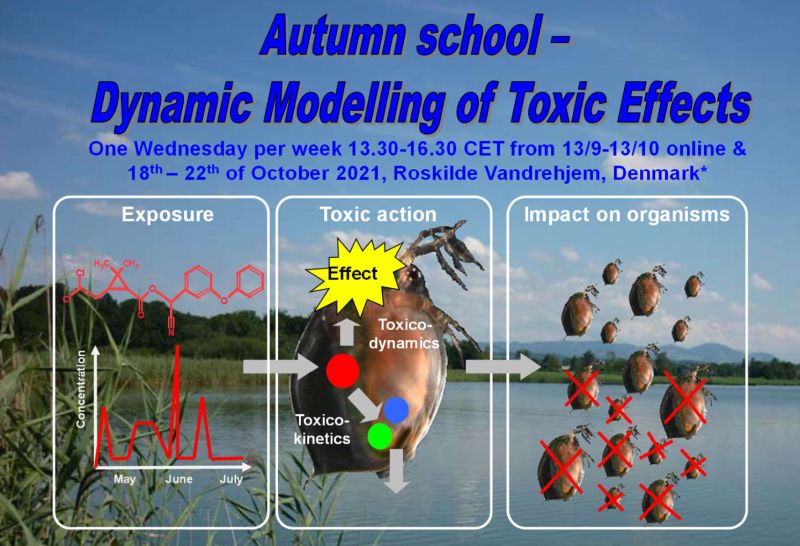Participants will learn how to analyse (eco)toxicity data, mechanistically and with explicit modelling of temporal aspects. The pre-course online lectures run from Sept 13 – Oct 13, 1:30-4:30 PM CET; the in-person training takes place on Oct 18-22 in Denmark (optional).
Mathematical modelling is a powerful tool to interpret the results of laboratory toxicity tests and to make educated extrapolations. The process of mechanistically modelling of toxicity can be divided into two steps: toxicokinetics (TK) and toxicodynamics (TD). TK deals with the uptake, biotransformation and distribution of a chemical into the body of an organism, whereas TD deals with the next steps, from internal concentration of the active compound to effects on the organism over time.
This course will teach the basics of TK and TD modelling, how they can be linked, and how to analyse and interpret toxicity data on a mechanistic basis. For TK modelling, we will focus on 1- and 2-compartment models. TD modelling will be based on a simple Dynamic Energy Budget model (DEBkiss), although we will treat survival modelling with GUTS in the pre-course (since GUTS is the simplest, non-trivial, TKTD model around).
The course is coordinated by Nina Cedergreen. Course contents and lectures will mainly be the responsibility Tjalling Jager, with contributions from Nina Cedergreen, Roman Ashauer, Andreas Focks, André Gergs and Neil Sherborne.
More information and registration details can be found on the course website.

